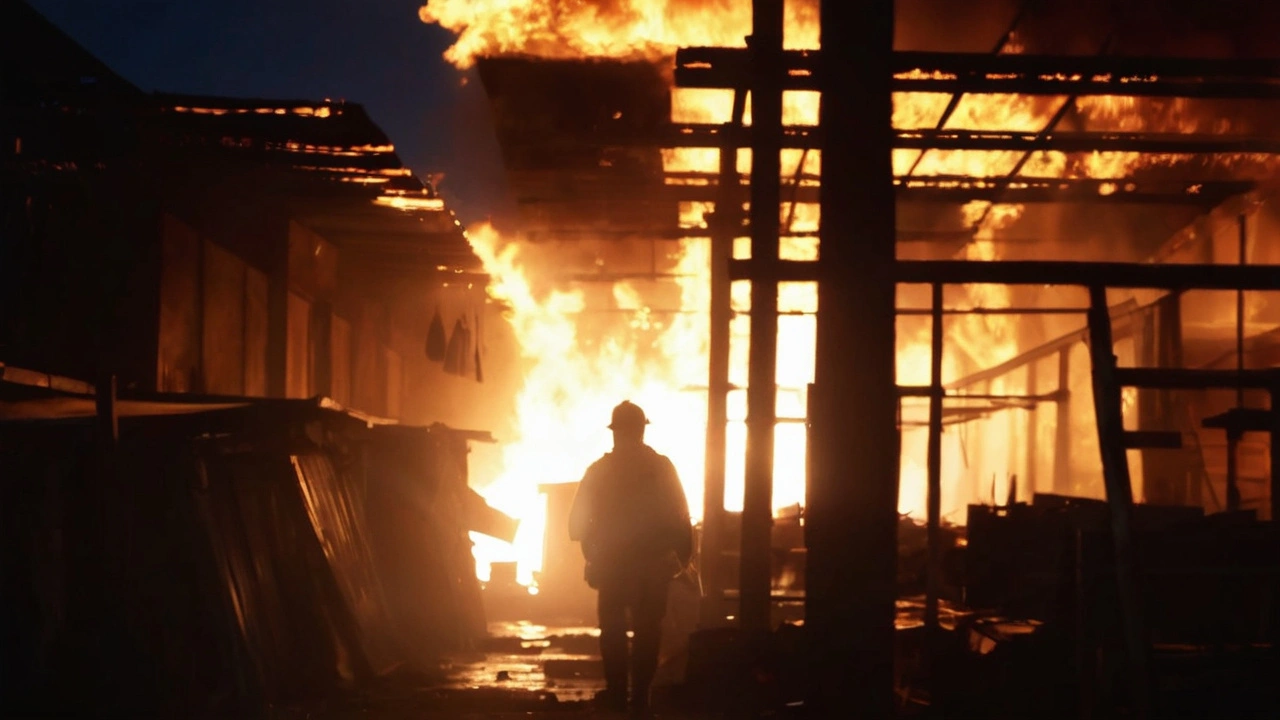Nairobi Governor Faces Hostile Reception During Toi Market Visit Following Deadly Fire
Nairobi's Toi Market Tragedy: Governor Sakaja's Tumultuous Visit
In a dramatic turn of events, Nairobi Governor Johnson Sakaja found himself at the center of chaos during a visit to Toi Market on Saturday, August 3, 2024. The visit followed a devastating fire that tragically claimed the lives of four individuals and left a path of destruction in its wake. Governor Sakaja's intention to address the situation and provide support to the market's affected community quickly devolved as he was met with stone-throwing residents.
The fire, which broke out in the early hours of the morning, tore through significant portions of Toi Market. Known for its vibrant local trade, the market is a lifeline for many residents who depend on it for their livelihoods. The inferno not only caused considerable property damage but also left a trail of loss and despair, further compounded by the deaths of four people. This marked one of the most tragic incidents the market has faced in recent years.
Governor Sakaja, aiming to exhibit the government's responsiveness, visited the affected site to assess the extent of the damage and reassure the community of the authorities' commitment to aid. However, the intended message of solidarity and support was overshadowed by visible anger and frustration among the market's populace. The stone-pelting incident was a stark manifestation of the local residents' deep sense of grief and the perceived inadequacies in disaster response and preparedness.
A Community in Mourning
Toi Market, often bustling with activity, has long been a cornerstone for local vendors and shoppers alike. The fire disrupted this harmony, casting a somber shadow over the market's recent memory. Families of the deceased and affected traders are grappling with the immediate impacts of the fire – loss of loved ones, destruction of property, and the uncertainty of what the future holds.
The four lives lost in the blaze have left an indelible mark on the community. Friends and family of the deceased are in mourning, and for many, the loss is still too raw to comprehend fully. These are not just statistics; they are fathers, mothers, sons, and daughters whose absence is deeply felt. Their stories of ambition and hardship now serve as poignant reminders of the fire's human cost.
The psychological impact of the fire is another critical concern. Survivors and witnesses, especially children, are dealing with trauma that will likely need long-term support to address. The chaotic aftermath and the attack on the Governor underscore the urgency of providing not only material but emotional and psychological aid to those affected.
Government's Role and Response
Governor Sakaja's visit was underpinned by a larger goal: to demonstrate the government's commitment to providing tangible support and rebuilding the affected areas. In the wake of the disaster, various government agencies have been mobilized to determine the immediate needs and ensure rapid deployment of resources. However, this tragedy has shone a light on systemic issues – the need for better disaster preparedness, efficient emergency response, and more robust safety measures in crowded, high-risk areas like markets.
Additionally, the Governor has called for an urgent review of safety regulations and enhanced measures to prevent such disasters in the future. This includes inspections of electrical wiring, availability of firefighting equipment, and conducting regular safety drills. While these measures may seem reactive in the aftermath of such a calamity, they are essential steps towards building a more resilient community infrastructure.
The on-ground reality remained tense as local traders gathered to salvage what they could from the wreckage. Many expressed concerns over the adequacy of the current response efforts, fearing that promises would not translate into actionable support. There's a palpable sense of urgency as they await further details about recovery plans and financial assistance to help them rebuild their lives and businesses.
Looking Ahead
The incident at Toi Market serves as a grim reminder of vulnerabilities inherent in densely populated urban settings. With Nairobi continuously expanding, the demands on infrastructure and emergency services will only grow. Therefore, a multi-pronged approach encompassing immediate relief and long-term preventive measures is crucial.
Moving forward, both local and national governments may need to re-examine urban planning and regulatory frameworks to better safeguard communities. This involves inclusive policymaking that considers the voices of those directly affected by such disasters. Investment in public awareness campaigns, training for first responders, and community engagement are vital to building a culture of readiness and resilience.
For now, the focus remains on recovering from the immediate aftermath of the fire. Authorities are working to clear the debris, offer support to those displaced, and ensure that the memory of the lost lives drives meaningful change. As the market slowly inches towards normalcy, the hope is that lessons learned will pave the way for safer, more secure environments in the future.
In conclusion, the tragic events at Toi Market have understandably left a scar on the community. The incident involving Governor Sakaja's visit further highlights the emotional turmoil and the urgent need for effective, empathetic governance. As Nairobi looks ahead, the resilience of its people, coupled with committed leadership, will be key in navigating the path to recovery and prevention of future tragedies.
